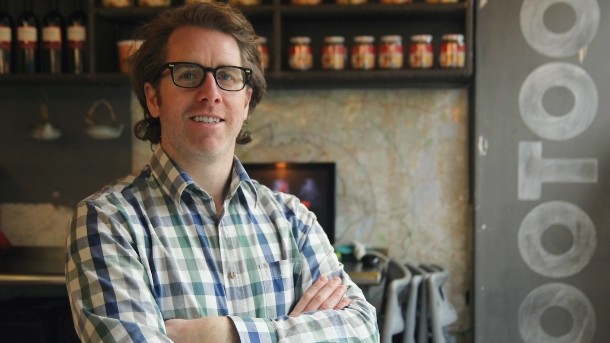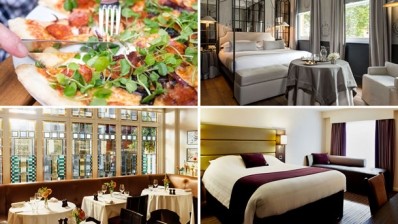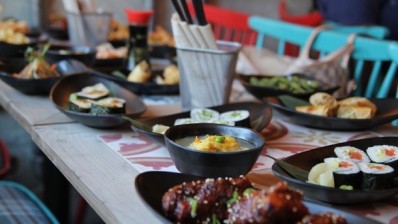Philip McGuinness of Tootoomoo on suburban sites and running restaurants like retail

Your business started out just doing takeaway and delivery, which are now big news. Why focus only on that to start with? Were you ahead of the curve?
I started by wanting to re-invent the takeaway. It was going to be about cocktails while you wait. Come in, order the takeaway, and have a cocktail. Deliveroo has recently been making delivery sexy, but we started doing very good value, restaurant-quality food in the postcodes where our sites are. We have always kept it really tight, so we can guarantee the quality.
Why open a restaurant in that case?
We simply had extra space in our first place in Crouch End, and we realised we could put 35 seats in there. Now, our restaurant builds that whole side of the business. It's a literal shop window and very profitable. Now, we probably do about 60% restaurant, 40% delivery.
Did you ever consider opening a restaurant first, and then doing takeaway from there?
I was learning as we went along, and now I realise that the restaurant actually helps build the delivery. Now, we do restaurant-level food. We're definitely about 15-20 % more expensive than your average bargain takeaway, but we deliver more on quality of food and service.
Your sites are mainly in suburban, largely residential areas. Why?
When I first opened in 2012, I couldn't afford to pay a big premium for a site. If you go to Soho, you could be putting a quarter, or half a million pounds in just for a premium. Even now, I always look at failed sites in less central areas, so I can get in, and spend the good money on the fit out.
Why – in this age of one-dish restaurants and super-niche concepts ‒ have you gone pan-Asian rather than one particular country or city cuisine?
My profitability sheet says it works! Our executive chef Ricky Pang said pan-Asian would give us more variety, and better choice. We deliver the 'greatest hits' in terms of Asian food ‒ Pad Thai, Singapore noodles, rendang, veg rolls, sushi, sashimi, aromatic duck. It just gives the customer a lot of variety. Doing a super-niche restaurant might work in the centre of town, but not in suburban areas. Nowadays people are very fickle. Competition is tough.
You are open in quite different areas, in terms of demographic. How do you adapt?
We have to tailor our offer. Firstly, we have the Islington style sites, which is 30 seats, small plates, Millennial audience. And secondly, you have Whetstone, where there are 100 seats, more families, people in their 40s and 50s, who want a bigger bar and more main-course-style food. Our model allows both, and they work well together. It's recognizably the same stuff, but it's presented slightly differently.
How do you carve out your niche when Thai, Indian, and Asian food has boomed in popularity recently ‒ such as Dishoom, Hoppers, or Rosa’s Thai Café?
I think Asian food will always be popular, because it's fresh, and people know it. These things are just always popular ‒ like pizza too. But you've got to keep on tailoring it. To be honest with you, I didn't go into Asian food because it's popular, but because it's healthier than fast food, and better than the poor quality suburban restaurants you often get. We know our suburban areas. Affordability is so important. Our average spend per head here is only about £20.
What's the biggest learning curve you've had?
Hiring and retaining the best people, especially chefs and managers. Getting the right people is always paramount.
I understand you also have plans to expand? Where?
Our model now will be restaurants with 100-seats-plus, delivery and takeaway, with a bar focusing on cocktails. It works. We've discovered that we can now fill that many seats. We’d like perhaps eight sites in the next 12-18 months, on a 10 mile radius around London ‒ places such as Notting Hill, Clapham, Balham ‒ and maybe even somewhere like Chigwell. Right now, we can't be further than 45-50 minutes from our production kitchen, but eventually we'd like to go outside of London, and have also been actively looking at failed pubs and sites.
What's your secret to making failed sites actually work?
Restaurants should be managed like retail outlets than restaurants. When you go to a retail outlet, like Topshop for example, you go for the experience as well. Good food is a given ‒ if you can’t do that, then you shouldn't be in business ‒ but then it's the waiter saying hello and the music that adds to the whole experience. I guess I think more like a retailer than a restaurateur.
































